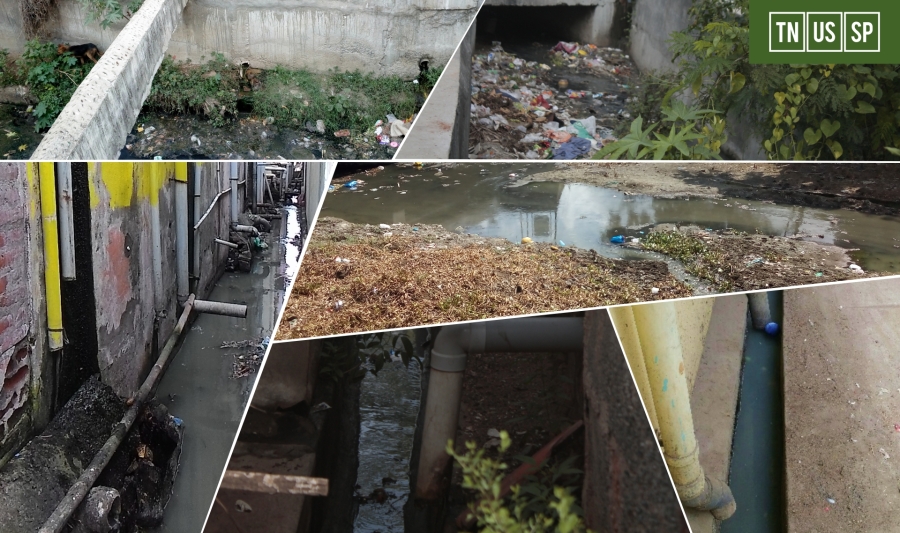
So, you have finished using the toilet. And, have flushed it down. But seriously, where does it all go?
When you ask this question, the answers you get will range from septic tanks to pits to the underground sewerage systems etc. But, is that the whole story? Now that is the difficult question, which begs a real hard look at the ground reality.
Let’s travel some years back in history. It is a well-known fact that ancient India had a fine network of storm water drains, which acted both as groundwater recharge systems, as well as flood control devices. In cities like Chennai, the network of storm water drains led to ponds (kulams) which acted as natural flood control devices. Thanks to unbridled ‘development’ and growth of unplanned settlements both these ‘kulams’ and the storm water drains are polluted and choked.
How have things come to this state? One of the major contributors of pollution in storm water drains (SWDs) are the people themselves. This happens in three ways: Many of the households, which have no containment structures attached to their toilets, connect the toilets to the storm water drains. Sometimes, even households, which have containment structures, connect the outlets the storm water drains. Thirdly, it is not unusual to see that the grey water from the kitchen and bathroom being connected to the storm water drain directly.
A study conducted by Tamil Nadu Urban Sanitation Support Programme (TNUSSP) on the state of the storm water drains showed that this kind of pollution was not only common in small towns but also in mega cities. When asked why toilets and containment structures were connected to storm water drains, most of the residents said that they used the storm water drains as an easy option because it was the “common practice in the area.” Some of them also mentioned the “lack of other options” as one of the reasons.
Letting grey water from the kitchen and bathroom into the open or closed drains is a very common practice all over the country. This is also because many of the people believe that storm water drains are meant to carry the grey water. It comes as a surprise to many people when they learn that storm water drains are meant only to carry storm water and urban runoff (surface runoff of rainwater) to the natural water bodies. However, in reality, the storm water drains end up carrying all the wastewater from the cities (and towns) to the natural water bodies resulting in the grand scale pollution of the water bodies and leading to a colossal public health hazard.
How does dumping of solid waste affect drains?
Dumping of solid waste in the drains is another huge problem that affects the functioning of the drain itself. The drains are designed based on certain set of criteria like the amount of rainfall in the area, natural slope and type of soil etc., which helps to estimates the amount of storm water that will get collected in a particular area. Dumping of solid waste and wastewater into the drains affect their functioning, resulting in improper flow, siltation and stagnation of water which further leads to a whole range of problems like bad odour and serving as a breeding ground for diseases like malaria, dengue, etc.
Where does it end up?
The final destination for the wastewater, which is carried by the drains are the natural water bodies such as streams, rivers, canals etc. A research into how these waterbodies have transformed over a period of time into gutters carrying dirty water will help us understand how we are killing them slowly. Not very long ago, people used to stop to look down bridges to enjoy the scenic beauty of clean, flowing water. Today, they cover their noses and try to get away as soon as possible.
To understand this problem better, the TNUSSP team conducted catchment level assessment of drains in selected locations. Watch this space for further insights into the study.
For Further Reference:

Olassayil Sancy Sebastian
Junior Specialist, TNUSSP

Suneethi Sundar
Specialist, TNUSSP



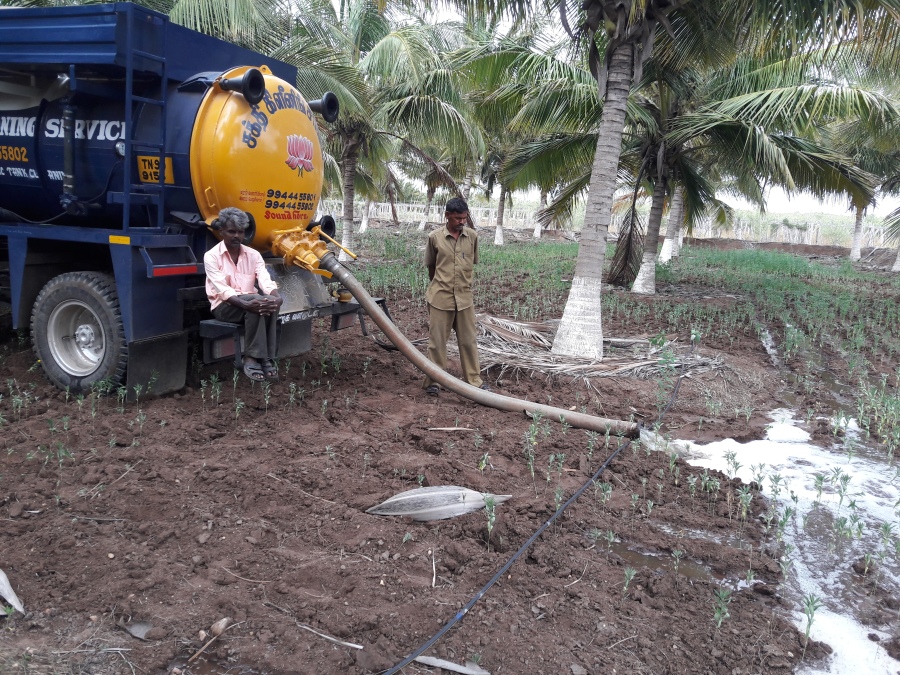 Once the ignition is switched off, we watch in amazement at Kumar’s metamorphosis. He is no longer the chatty person who was sitting beside us behind the wheel. He jumps down from the driver’s cabin, reaches the septic tank and breaks open the sealed manhole with a crowbar. In an equally well-coordinated move, Muthu pulls down the extension hose from the top of the truck, connects it to the valve embedded on the tanker, and pushes the other end into the septic tank. Thanks to the vacuum suction technology, the vacuum tank is filled with 5000 litres of septage in a few minutes. Throughout the entire process, Kumar has kept a careful watch on the volume gauge mounted on the tanker.
Once the ignition is switched off, we watch in amazement at Kumar’s metamorphosis. He is no longer the chatty person who was sitting beside us behind the wheel. He jumps down from the driver’s cabin, reaches the septic tank and breaks open the sealed manhole with a crowbar. In an equally well-coordinated move, Muthu pulls down the extension hose from the top of the truck, connects it to the valve embedded on the tanker, and pushes the other end into the septic tank. Thanks to the vacuum suction technology, the vacuum tank is filled with 5000 litres of septage in a few minutes. Throughout the entire process, Kumar has kept a careful watch on the volume gauge mounted on the tanker.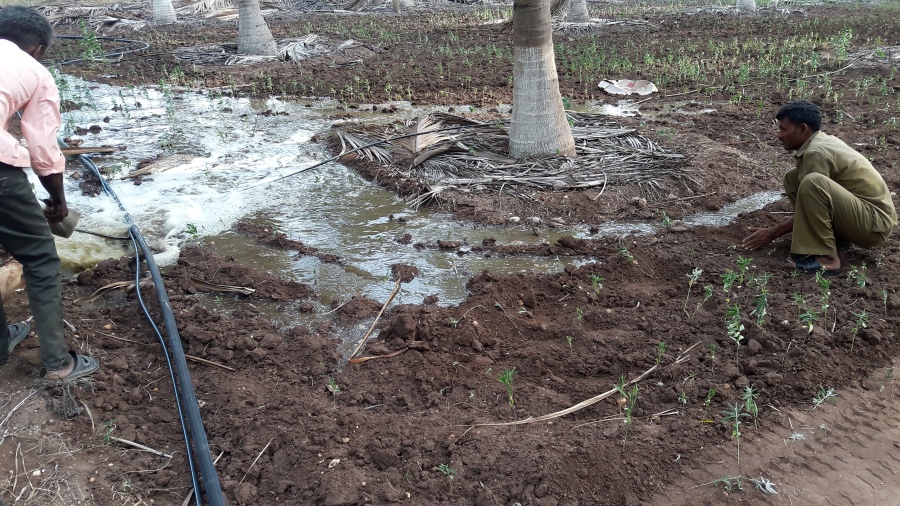 Surely enough, half an hour later we are at a large coconut grove. With the farmer’s wife supervising the unloading, Kumar and Muthu empty the entire tanker into the groove. We take the opportunity to speak to the farmer’s wife. She tells us that her farm receives around 20 loads of septage every couple of months. “It is not only from the poultry farm, we have an arrangement with a couple of other places for regular supply of septage,” she says with a smile. Her husband who had joined her tells us that the septage is very important during dry spells when the farm faces acute water scarcity.
Surely enough, half an hour later we are at a large coconut grove. With the farmer’s wife supervising the unloading, Kumar and Muthu empty the entire tanker into the groove. We take the opportunity to speak to the farmer’s wife. She tells us that her farm receives around 20 loads of septage every couple of months. “It is not only from the poultry farm, we have an arrangement with a couple of other places for regular supply of septage,” she says with a smile. Her husband who had joined her tells us that the septage is very important during dry spells when the farm faces acute water scarcity.

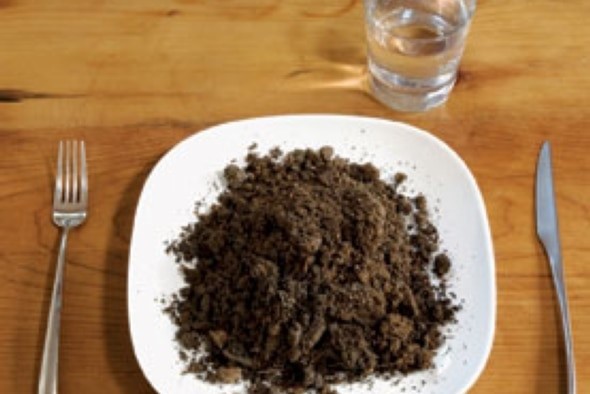



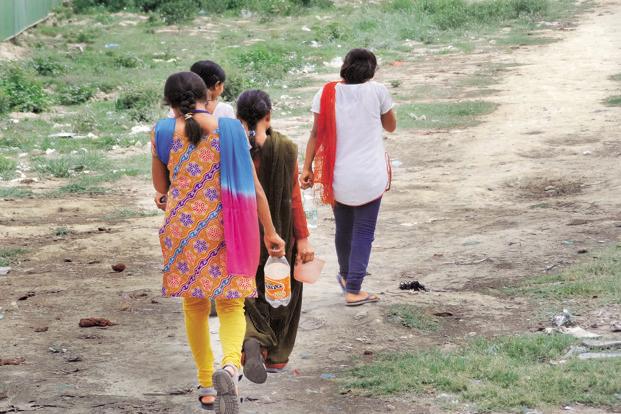

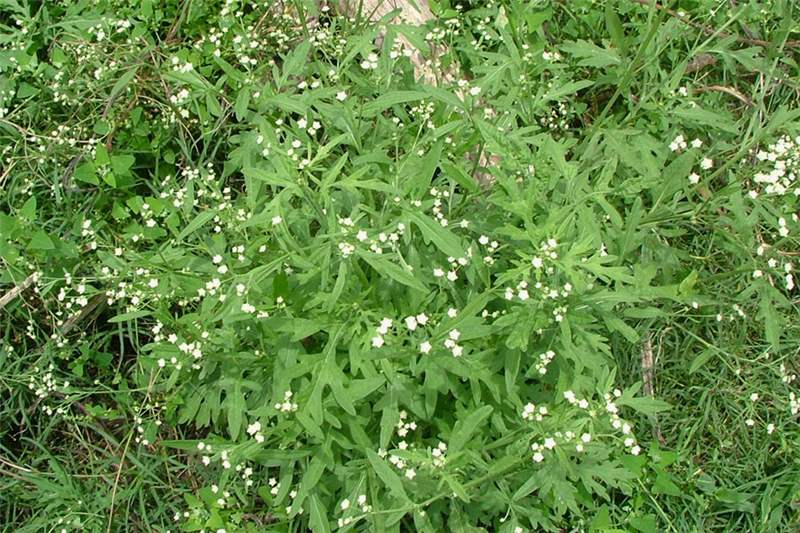 “When there were a few plants around, we used to remove them manually, but now there seems to be an infestation of the weed. We are scared because people seem to be falling ill with different kinds of allergies,” he said.
“When there were a few plants around, we used to remove them manually, but now there seems to be an infestation of the weed. We are scared because people seem to be falling ill with different kinds of allergies,” he said.
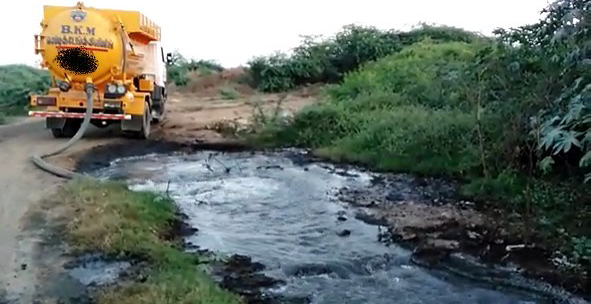

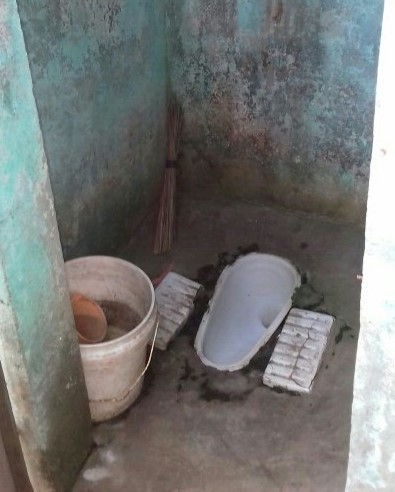 The answer is rather direct – sanitation along state and national highways has not received adequate attention within the WASH sector or policy in India. In the context of urban sanitation, which in recent years has received concerted attention among policy-makers and practitioners in India, the provision of toilets along National or State Highways is a missing component. The vision of the National Sanitation Policy 2008 by the Ministry of Urban Development, Government of India clearly states that, “All Indian cities and towns become totally sanitized, healthy and livable and ensure and sustain good public health and environmental outcomes for all their citizens with a special focus on hygienic and affordable sanitation facilities for the urban poor and women” (NUSP, 2008
The answer is rather direct – sanitation along state and national highways has not received adequate attention within the WASH sector or policy in India. In the context of urban sanitation, which in recent years has received concerted attention among policy-makers and practitioners in India, the provision of toilets along National or State Highways is a missing component. The vision of the National Sanitation Policy 2008 by the Ministry of Urban Development, Government of India clearly states that, “All Indian cities and towns become totally sanitized, healthy and livable and ensure and sustain good public health and environmental outcomes for all their citizens with a special focus on hygienic and affordable sanitation facilities for the urban poor and women” (NUSP, 2008 